Oltena
|
 |
|
Ceausescu’s regime collapsed after a series of violent
events in Timisoara and Bucharest in December 1989 and on
Christmas Day, Ceausescu and his wife were condemned to
death by a military court having been convicted on charges
ranging from illegal gathering of wealth to genocide, and
were executed in Târgoviste.
The legacy of the Ceausescu government left Romania with
major economic problems and the new government of Ion
Ielescu (comprised in the main of former Communist
apparatchicks) continued the policy of limiting movements
of hard currency out of the country and maintaining the
principles of state interventionism in industry.
Obviously this state of affairs was unsatisfactory as far
as Citroën were concerned and in 1990 they withdrew from
the arrangement. There were disputes with the Oltcit
management over the unauthorised use of Dacia components
in the cars and of the withdrawal of the marque from
Eastern European markets. Oltcit ceased
manufacturing the two cylinder car because Citroën had not
provided Oltcit with the requisite technology to enable
them to manufacture the engine. In 1991, production
plummeted to just 20,000 cars. Control of the Oltcit
venture reverted to the state.
|
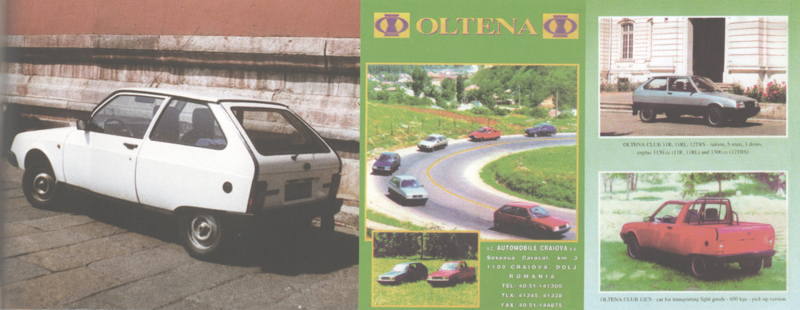 |
|
A relaxation of the state control occurred in
1994 and a new, privatised company was set up,
accompanied by a name change to OLTENA.
|
 |
|
Oltena developed some five door prototypes on an
extended platform which never went into
production.
|
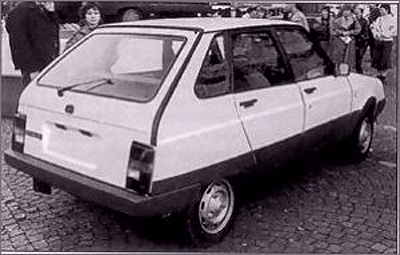 |
 |
|
Later that year a joint venture between Oltcit
and South Korean industrial giant Daewoo called
Rodae (Romanian Daewoo) was set up
to both sell the Oltena and import Daewoo
cars. The Oltena was restyled at this time
and given a new nose (right) which looked not
unlike that of the Talbot Solara and Samba.
Two versions of this car were built – the 11 E
(powered by the 1129cc engine) and the 12 E
(1299cc).
|
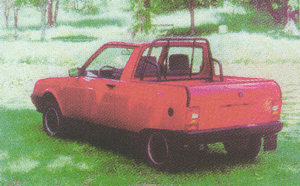 |
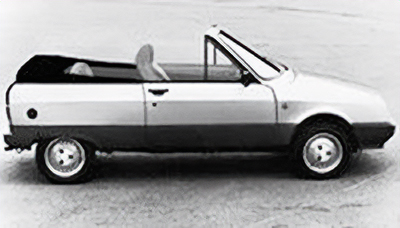 |
|
Above and below - Oltcit cabriolet
|
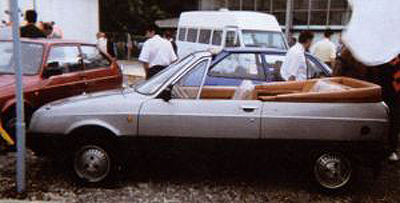
|
|
|
With the withdrawal of Citroën, there was a
change in logo as evidenced on the Oltena brochure
above.
|
|
|
|
In early 1996, there was another name change to
SC Axa SA Craiova and the decision was taken to
end production of the Oltena since each car was
sold at a loss of $1500.
SC Mecatim SA Timisoara, producer of the Lastun
car indicated that it wanted to transfer the
manufacture of the Oltena to its factory in
Timisoara but to the best of my knowledge, this
never happened.
|
|
|
|
A commercial variant of the Oltena was also
available, called the Cargo
or 12 CS, this was a
pick up. The first prototype was built
in 1988 and used the floor pan of the proposed
five-door version (see above) but due to high
development costs, this was abandoned in favour of
a version using the three-door Oltcit floor pan.
|
|
The Oltcit World Car
According to Gilles Colboc and
Jean François Ruchaud's excellent book, "Les
Citroën du monde", in the mid
nineteen eighties, US automobile manufacturer
Chrysler, having sold its European operations to
PSA found it needed a new small car to distribute
in the USA and Canada. Chrysler was put in
touch with Oltcit’s Romanian management and an
American delegation visited Craiova where they
were astounded to discover an up to date
automobile factory; more modern than anything the
company owned in the USA. The Oltcit
management decided to adapt the Oltcit to North
American norms but experienced great difficulty
with achieving the requisite emissions from the
air-cooled boxer. A prototype was fitted
with a Magneti Morelli monopoint injection system
and catalytic converter but this failed to meet
either US or European emissions standards.
Olda
A prototype Oltcit was also produced in
Romania in 1986, Called Olda (Oltcit Dacia),
this made use of the Dacia 1300 engine and
transmission but there were major problems in
getting the ensemble to work but some of the ideas
found their way into the RM.
|
|
|
|
Above and below - Oltcit had
developed a cabriolet but was unable to get this
homologated for road use – there were major
structural problems which were not helped by the
lack of a roll bar and the use of a horizontal
piece of veneered wood between the rear wings did
not do much for rigidity.
|
|
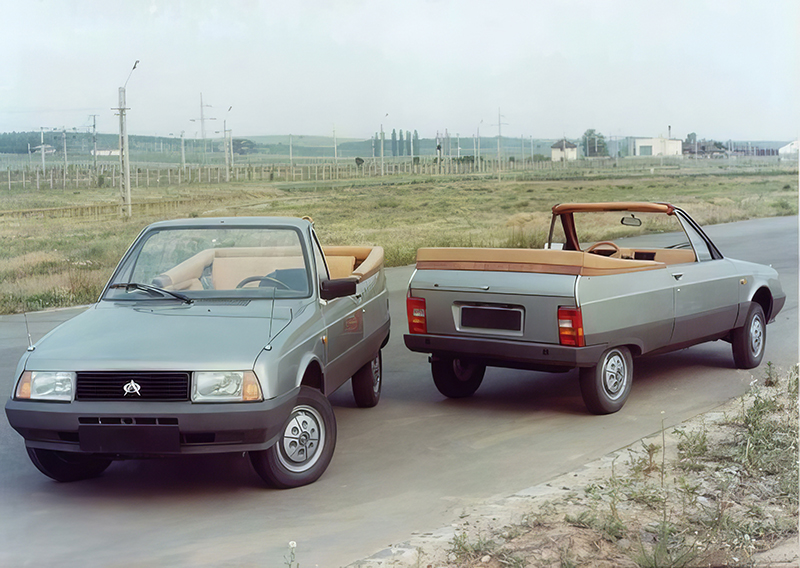
|
Technical
Specifications (Oltcit)
|
|
|
Special |
11 R & 11 RL |
12 TRS |
| Engine |
| Number of cylinders |
2 horizontally opposed |
4
horizontally opposed |
4
horizontally opposed |
| Cubic capacity |
652 cc |
1 129cc |
1 299cc |
| Bore & stroke |
77 x 70 |
74 x 65,6 |
79,4 x 65,6 |
| Compression ratio |
9,5 : 1 |
9 : 1 |
8,7 : 1 |
| BHP @ RPM |
34,5 @ 5 500 |
57,5 @ 6 250 |
61,5 @ 5 500 |
| Torque @ RPM |
5,0 mkg @ 3 500 |
8,1 mkg @3 500 |
9,8 mkg @ 3 250 |
| Cooling |
Air |
Air |
Air |
| Transmission |
| Gearbox |
4 speed manual |
4 speed manual |
5 speed manual |
| Clutch |
Single dry plate |
Single dry plate |
Single dry plate |
| Brakes |
| Front |
Inboard discs |
Inboard discs |
Inboard discs |
| Rear |
Discs |
Discs |
Discs |
| Suspension |
| Front |
Double wishbones with
longitudinal torsion bars |
Double wishbones with
longitudinal torsion bars |
Double wishbones with
longitudinal torsion bars |
| Rear |
Trailing arms with transverse
torsion bars |
Trailing arms with transverse
torsion bars |
Trailing arms with transverse
torsion bars |
| Tyres |
135 SR 13 |
145 SR 13 |
160/65 R 340 TRX |
| Performance |
| Maximum speed |
125 kph |
150 kph |
157 kph |
| Fuel consumption |
4,9 litres/100 km |
6,0 litres/100 km |
7,7 litres/100 km |
|
 |
© 1996-2006 Julian
Marsh/Citroënët/Gilles Colboc/Jean François Ruchaud |


